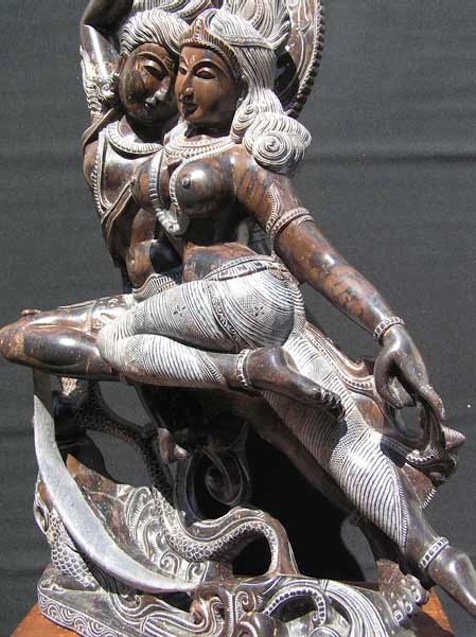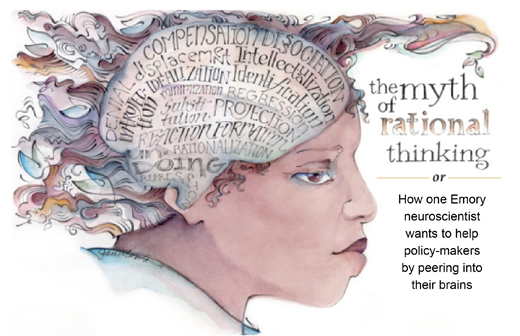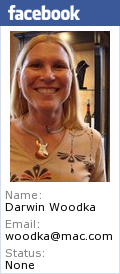Awareness in life is not hoping you learn to dance — it is recognizing that you already are dancing. Life is the dancer, you are the dance.
2004:
“It is true that being aware of how things happen makes one’s words more potent and one’s behavior more effective. But even without the light of consciousness, people grow and improve. Being unconscious is not a crime; it is merely a lack of a very helpful ability.
Knowing how things work gives the leader more real power and ability than all the degrees or titles the world can offer. That is why people in every era and in every culture have honored those who know how things happen.”Tao of Leadership
When I first started blogging about the Tao back in 2004, I was at the beginning of developing my full sense of awareness. But of course developing awareness isn’t something you can ever really finish; it is always a continuing process. Some moments allow us to be more present and aware than others, some people in our lives allow us to be more present with them than do others. This summer I had the amazing experience of being with a friend where we were both totally and completely aware with each other over several days, and it was a life changing experience for both of us.
I can still find it difficult to be around those who lack awareness, as I said when I posted this in 2004. I am pretty forgiving most of the time, though, and see it as a way to practice loving kindness towards those who are less aware. I often take the bodhisatva path of trying to wake others up, and walk with them for a while, but I usually revert to Tao eventually and am content to simply walk my own path.
2005:
Too many people seem to walk through their lives in a daze, not aware of what is going on around them at all, lost in their concerns over what has happened or will happen. We all need to be awake and aware to the possibilities of the Now –- and the consequences to the future of lacking that awareness.
I blogged a great deal about Tao in 2005, including most of Deng Ming Dao’s wonderful 365 Tao, which I sometimes give to friends who are in conflict. I have a good friend who is reading this right now, and I think it is beginning to help her. I credit this book with helping me the most with my own personal inner changes. If you want to see my real changes, it is in the contrast between the posts from that book and the political articles I was posting. In that year, I felt all the anger I had felt over our country’s situation shift into taking action to do something to change things. I worked a lot on political issues, but lost the anger I had felt and let it shift into movement. I began to understand that Tao is not only about acceptance of what is, but using the power of Tao to help create new or different situations. We are not helpless victims, we are the creators of our own world.
2006:
A person with true self-acceptance is “a person with full awareness of self in body, mind and spirit. This person’s center of consciousness (Hsing – “Heart Flower”) is in full bloom, ready to receive power from above, openly relating to and being reflected by others.”
It may seem clever to know and accept others
Yet accepting oneself is the way to Wisdom.
It may feel powerful to overcome others
Yet disciplining oneself is true Strength.
It may be noble to honor others
Yet respecting oneself is deep self-esteem.
– Tao Mentoring
It has taken me a long time to fully learn to accept myself as I am. And it is a process I’ve repeated many times over. Each time I come to believe I finally accept myself, I find something I still want to improve. Meeting this balance between accepting myself as I am and knowing that I have even more room to grow is always interesting. It means not being complacent with where I am at, but always knowing there is more to know, more to see and feel and do, and that is ok.
But I think the key is really respect. Self-respect is not simply about accepting who you are right at this moment, but also respecting yourself enough to continually challenge yourself. Not allowing yourself to become complacent, thinking you are already the best you can be, but knowing there is more you can do and always being ready to learn and grow and change, truly opening yourself to the possibilities of life that are all around you.
This was one of my favorite posts, and one I return to often. I truly believe the key to being able to help others lies in acceptance of ourselves. In 2006, I developed the ability to really create change through simply being myself. I also blogged a lot about art journaling, and using art as a means to learn about yourself and perhaps visually see the inner processes that are usually hidden within us. It was a very helpful time for me, opening me up to new experiences and ideas and a great community of art bloggers.
2007:
“We already have everything we need. There is no need for self-improvement. All these trips we lay on ourselves never touch our basic wealth. They are like clouds that temporarily block the sun. But all the time our warmth and brilliance are right here. This is who we really are. We are one blink of the eye from being fully awake.” — Pema Chodron, Start From Where You Are
In 2007, I blogged about yoga, including Rolf Gates’ wonderful “Meditations from the Mat”, and Buddhism, including much of the wonderful Pema Chodron . I spent a lot of time exploring different paths, but still found Tao to be the one that I kept returning to (well, return is the way of the Tao…) I did a lot of traveling and exploring, worked a great deal on politics, and really felt that our political community was moving towards creating change.
2009:
“How much of the day are you aware -– just basically aware of what life is presenting -– rather than being lost in waking sleep, in being identified with whatever you’re doing, almost as if you didn’t exist?
To what extent do you blindly drift from one form of comfort to another, from one daydream or fantasy to another, from one secure place to another, in order to avoid the anxious quiver of discomfort or insecurity? How much of your energy is used to fortify a particular self-image, or to simply please others in order to gain approval, instead of devoting your energy to living a genuine life?” — At Home in the Muddy Water: A Guide to Finding Peace within Everyday Chaos Ezra Bayda
“Oh soul,
you worry too much.
You have seen your own strength.
You have seen your own beauty.
You have seen your golden wings.
Of anything less,
why do you worry?
You are in truth
the soul, of the soul, of the soul.”
Jalal ad-Din Rumi
For me, spiritual growth has come in strange ways and from strange places, and I think that is how authentic spiritual growth progresses, from within, as we turn through the limits of our own being and try to become more. We find ourselves turning again and again within the limited space of ourselves, and finally realize that there is an enormous amount of space outside of ourselves. We then create mobius strips and Klein bottles, trying to bring this outside space within ourselves, an impossible task at first. We see the beautiful poetry of Rumi as he struggles with spirituality, the magnificent stories and tales of mythology, religion, and literature, all trying to move in these same paths.
And then one day, a small hummingbird sits in front of your nose, flapping its wings, and looks at you curiously, or you gaze into a flower and finally really see it, or someone says something that catches your ear and your mind at just the right moment, or a quiet meditation brings you to the place within yourself that just knows, simply knows, and you smile. You get it. You get that Mona Lisa smile on your face and just — become yourself.
And it happens over and over. We find ourselves, we lose ourselves, we find ourselves again, at another place on the spiral. The helixes divide, and come back together. And life goes on.
2009 for me was about realizing “there is nothing to achieve” — we are already within ourselves everything we want to be or could hope to be. Everything else is just ego. It’s the point where I really became comfortable in my own skin, even as I watch that skin age.
And then — my wonderful friend came along and exploded my world again with this question:
“How open to change are you?”
My boat strikes something deep.
At first, sounds of silence, waves.
Nothing has happened;
Or perhaps everything has happened
And I am sitting in my new life.
-– Rumi
2010:
“Dogen reminds us that to raise the mind of compassionate awakening is none other than the whole of daily activity with no concern for one’s self, no thought of outcome, no sense of self-gratification. It means that whatever is, is the best that there is at this moment. Just this, wholly this, only this.
Engaging in the Way, in the life of continuous practice, means that we are constantly awakening with each new moment. Awakening is not a single event in time. Rather it is a continuous event through time. Basho wrote: Let me be called a traveler. He did not mention any destination. Just a traveler.”
- Joan Halifax via Whiskey River
“Being present in the motion, moment after moment, provides that secret chamber of awareness and gives the writer the chance to notice what is passing by before it is gone.” — Richard R. Powell, Wabi Sabi for Writers
So you may have noticed a lack of posting here lately. Well, much of my work has moved elsewhere on the Internet — into Facebook, Twitter, Tumblr — but much of me is now just off living my life, living in awareness, being where I am and with who I am with and doing whatever I am doing, but always Being. I made a vision board a year or so ago with the words “Go. Do. Be” on it, and that’s what I’ve been doing. I keep growing, moving, changing, becoming, being. Others may notice, or not, it doesn’t matter. I may change the world, or those around me, or not, it doesn’t matter. What matters, for all of us, is Awareness and Being.
That’s all there is, really. The rest is ego. Life dances. You are the dance, not the dancer.










